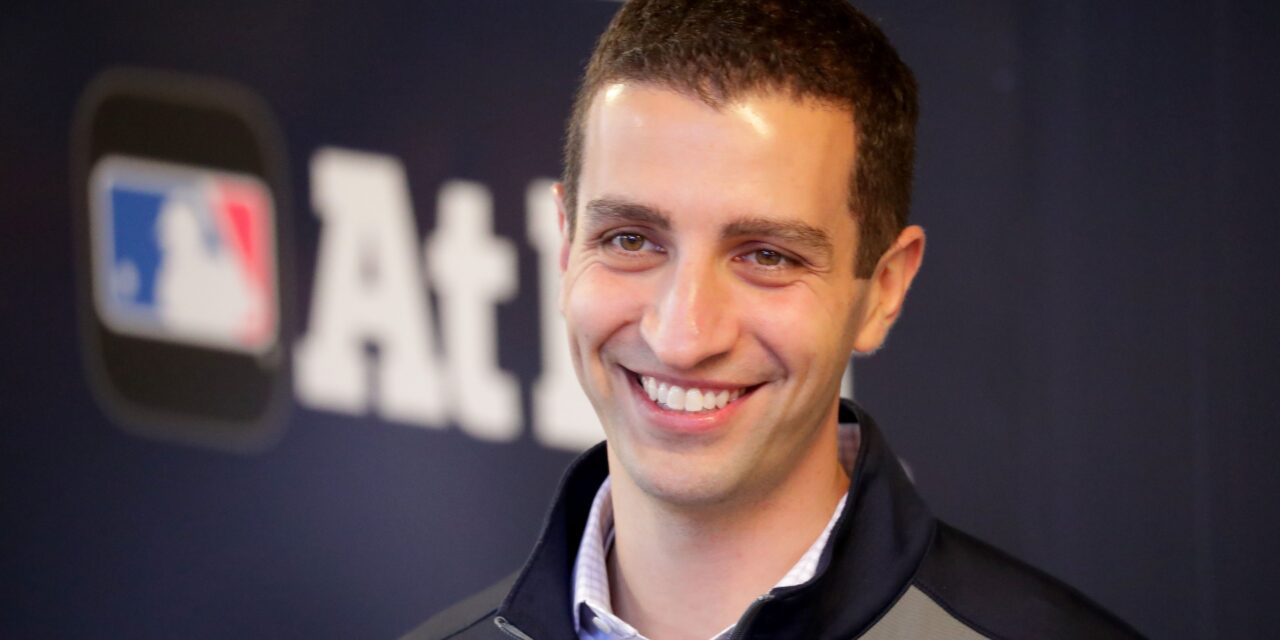Updated Post – Dec. 3, 2023:
Andy Martino of SNY reported that the Mets have the following on their Winter Meetings wishlist: outfielder, starting pitching, and relief pitching.
Original Post –
The 2023 Winter Meetings are set to begin on Monday in Nashville. The meetings will run from December 3 through the 6th. With a plethora of roster spots open, president of baseball operations, David Stearns, has a lot of work to do.
Despite Winter Meetings not beginning for another 24 hours, the Mets have already been busy. The first “big” signing the team made was bringing in a reclamation project and former Yankees’ starter, Luis Severino, on a one-year, $13 million deal. New York also added depth in the form of utility infielder Joey Wendle, who will replace Luis Guillorme in a similar role next year. Lastly, they signed reliever Austin Adams to a major-league deal.
The team also made a plethora of depth moves, claiming catcher Tyler Heineman and utility player Cooper Hummel. Relief pitchers Kyle Crick and Andre Scrubb was also signed to minor-league deals. It is the beginning to what projects to be an extremely busy offseason for New York.
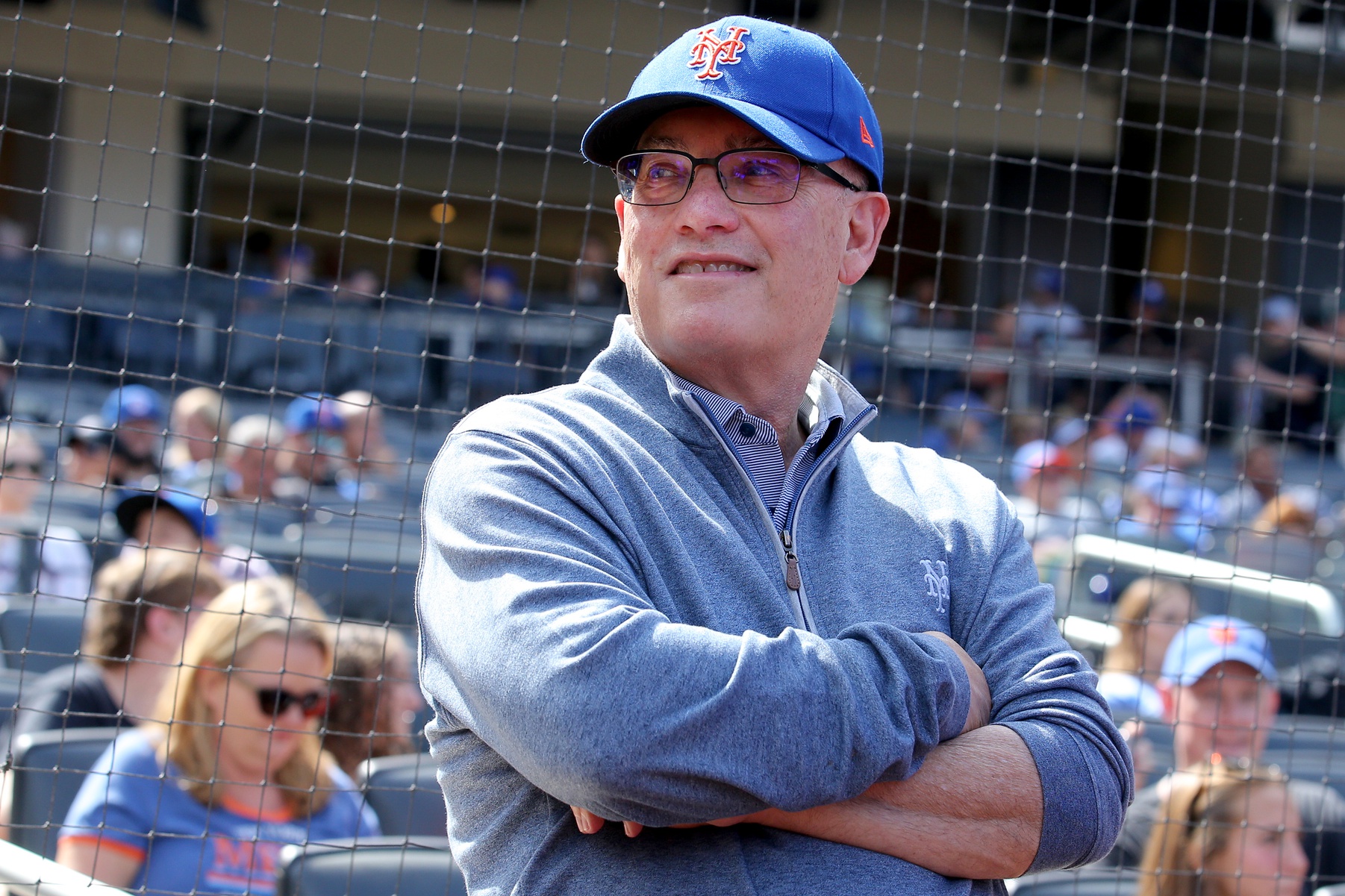
Steve Cohen. Brad Penner-USA TODAY Sports
Payroll Forecast and Potential Spending Consequences
Despite the flurry of moves, mostly for depth, New York has already made, the team is likely nowhere close to being done. To understand just how much flexibility they may have, a quick analysis of the team’s payroll and spending consequences is helpful.
Currently, per Cot’s Baseball Contracts, the Mets own the major league’s highest payroll at $289,760,00–A figure already above the first aforementioned luxury-tax threshold.
For comparison’s sake, the second-highest 40-man CBT payroll team is the Philadelphia Phillies at $252.7 million. Last year, New York ended the season at a 40-man CB Tax payroll of $366.1 million, the Yankees were the second-highest at $298.5 million. Another interesting tidbit is New York is currently scheduled to possess $65,933,333 in “dead money” factored into their total figure thanks to the trades of Justin Verlander, Max Scherzer, and James McCann, as well as the outright of Tomás Nido. This figure is higher than the Oakland Athletic’s current $59.3 million 40-man CB tax payroll.
So, what are the penalties for where the Mets currently stand? Where might they project to be by the beginning of the season? Specifically, given this is the third year in a row the Mets are expected to pierce the threshold, they will have to pay a 50% tax on all overages. Further, as the Mets spend more and more, as they are expected to, surcharges will be applied. You can find that breakdown below:
- $257 million to $277 million: 12% surcharge
- $277 million to $297 million: 45% surcharge (would be the third-straight year)
- Over $297 million: 60% surcharge
As you can, the Mets are once again expected to blow through all the thresholds.
You can read a more in-depth explanation on the potential penalties here.
Current Roster Outlook
Coming off an 87-loss season, where the organization rightfully entered “sell mode” at the trade deadline, has resulted in a team this offseason that has several holes. Roster moves, most notably the non-tendering of several players, such as Daniel Vogelbach, Trevor Gott, Luis Guillorme, among others, has also given the Mets extreme flexibility in their 40-man roster. As it stands, New York only has 33 players on their 40-man unit.
With everything we know now, entering Winter Meetings, how does the current landscape of the roster project?
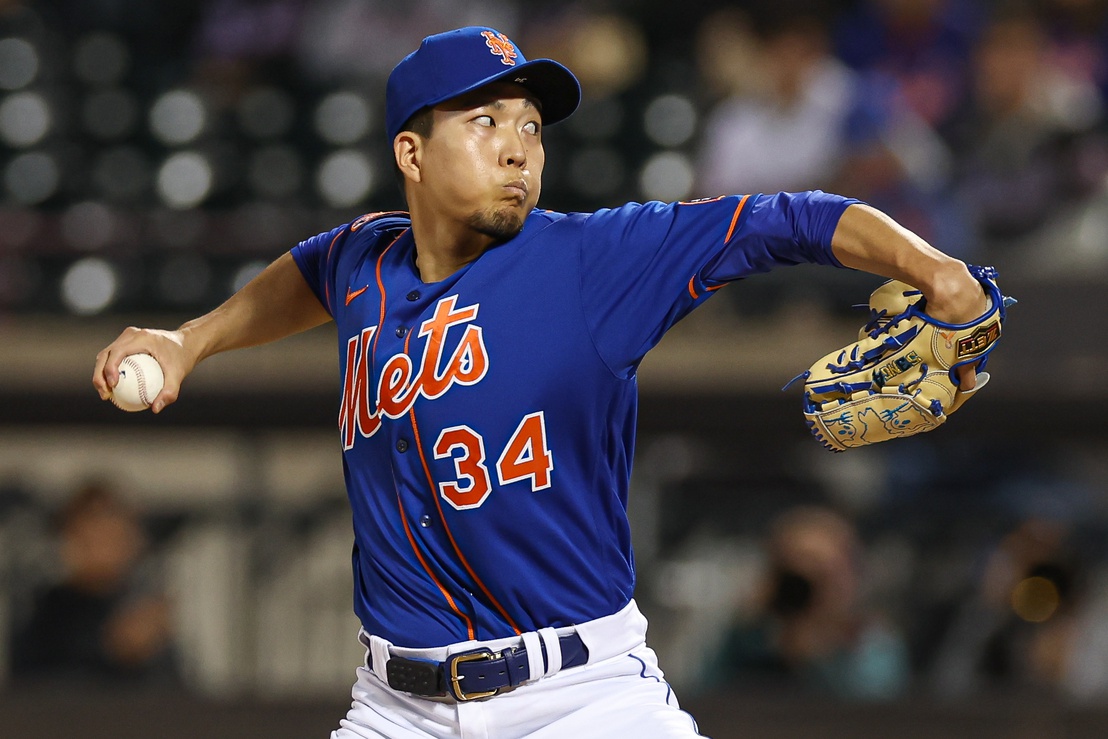
Kodai Senga. Vincent Carchietta-USA TODAY Sports
Starting Rotation
- Kodai Senga
- José Quintana
- Luis Severino
- Tylor Megill
- Joey Lucchesi
An under-the-radar loss New York suffered earlier in the offseason was David Peterson undergoing hip surgery. He is expected to be out until May. The Mets also have another option to factor into the above in José Butto, who showed flashes at points last year (3.93 xERA).
This is an area New York will likely continue to address, whether that be through free agency or the trade market.
Bullpen
There likely is not another unit on the team, especially after the signing of starter Luis Severino, that needs more work than the bullpen. As it stands, New York only has four relievers that will factor into the Opening Day roster: Edwin Díaz, Brooks Raley, Drew Smith, and Austin Adams.
Other 40-man roster options consist of Grant Hartwig, Phil Bickford, Josh Walker, Sean Reid-Foley, and Reed Garrett. However, each does not have an established track record, and all but Reid-Foley (7 2/3 innings, 3.52 ERA) posted xERAs over 4.29 last season, with most being close to 5.00.
New York also has some non-40-man roster prospects that may get a look. Some of these examples are RHP Paul Gervase (2.05 ERA and 96 strikeouts across 57 total minor league innings last season), LHP Nate Lavender (2.98 ERA and 86 strikeouts over 54 1/3 total minor league innings last season), and the rehabbing RHP Bryce Montes de Oca. Meanwhile, they recently signed RHP Kyle Crick (3.56 career ERA) to a minor-league deal and Cole Sulser (3.87 career ERA) is a non-roster invitee.
The bottom line is there is a lot of question which signifies the Mets have a lot of work to do on the backend.

Pete Alonso. Photo by Roberto Carlo
Position Players
The group of position players that the Mets will largely reflect something similar to the group New York utilized last year. Here is how the depth chart currently stands based off the current 40-man roster (no specific order):
- C: Francisco Álvarez, Omar Narváez, Tyler Heineman
- 1B: Pete Alonso, Mark Vientos
- 2B: Jeff McNeil, Zack Short
- 3B: Brett Baty
- SS: Francisco Lindor, Ronny Mauricio
- LF: DJ Stewart,
- CF: Brandon Nimmo,
- RF: Starling Marte
- UTIL: Joey Wendle, Cooper Hummel
The Mets also have some younger minor leaguers like Jeremiah Jackson (22 home runs last season and .802 OPS after joining Double-A Binghamton) or Carlos Cortes (.783 OPS last season with Triple-A Syracuse) who may try to fight for a role out of training camp.
The Needs and Potential Options
It is pretty clear. President of baseball operations, David Stearns, has work to do. The glaring issues appear to be pitching, both in the rotation and in the bullpen. With that being said, the lineup cannot be overlooked either. Both at some key positions and on the bench.
Pitching
The Rotation
As the rotation currently stands, two more external adds would be beneficial. Tylor Megill (5.85 xERA in 2023) and Joey Lucchesi (5.44 xERA) currently factor into the Opening Day rotation, however, each posted subpar underlying metrics in 2023. Despite Lucceshi escaping the season with solid traditional statistics, each have yet shown to be every-fifth day starters. Not to mention, the only depth behind the current rotation is José Butto. Not only would two more external options provide needed upgrades to the rotation, it would give New York much better depth.
It is fair to slot Kodai Senga in a top-two slot with José Quintana and Luis Severino slotting in the bottom part of the rotation. That leaves New York needing to fulfill a top-of-the-rotation starter and a bottom-of-the-rotation arm. Who are some options?
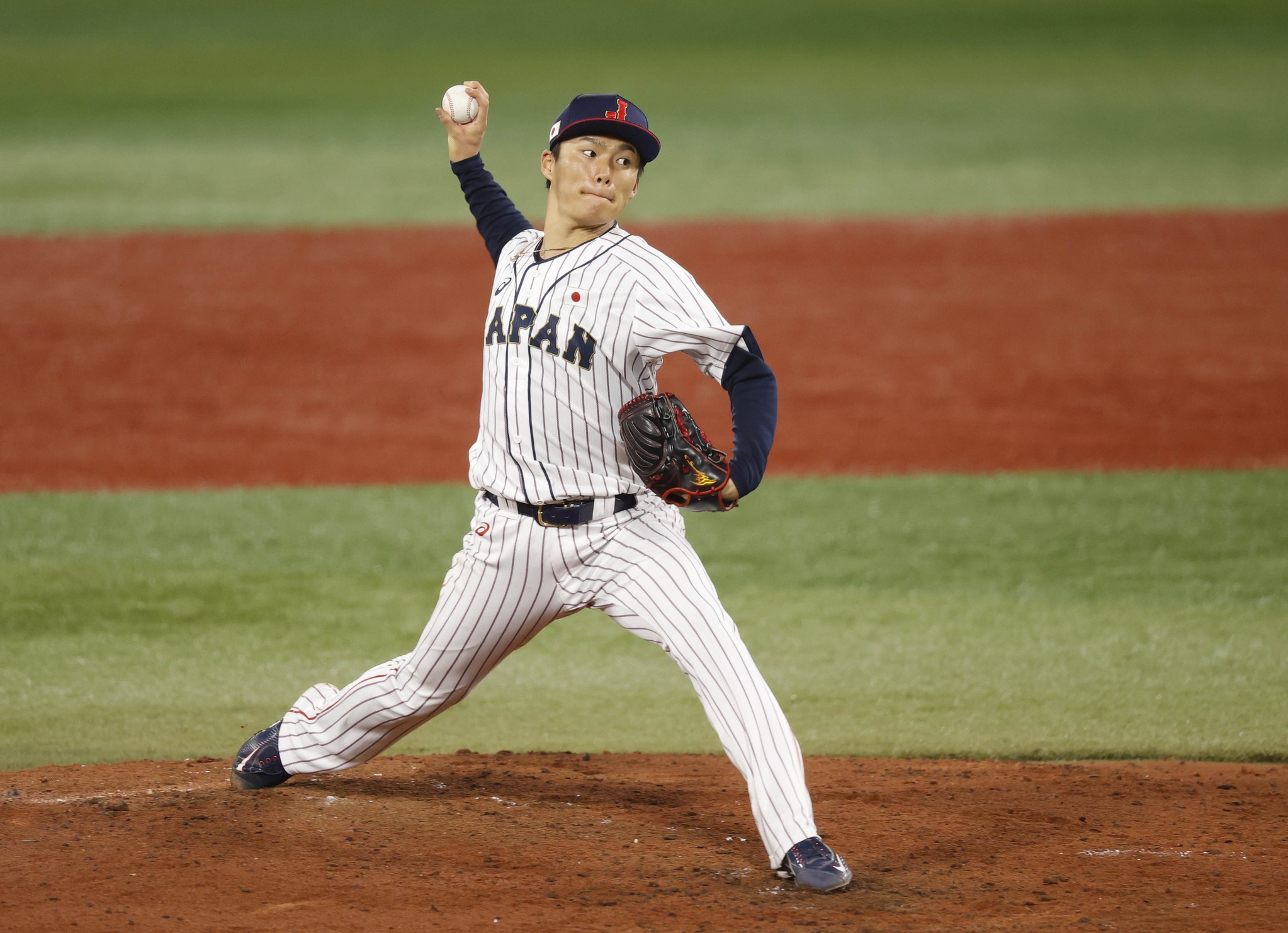
Yoshinobu Yamamoto. Yukihito Taguchi-USA TODAY Sports
The Mets’ interest in Yoshinobu Yamamoto has long been rumored and he would instantly fill that top-of-the-rotation hole. Jordan Montgomery has also been a name mentioned as a potential pitcher on the Mets’ radar. He would also fulfill a spot in the top half of the Mets rotation.
As for other top-half rotation options, Blake Snell, Eduardo Rodriguez, and Shohei Ohtani also are still on the market. However, as it relates to Ohtani, New York has reportedly turned their attention to other players.
The bottom half of the rotation free agent options that would benefit the Mets, in order of wins above replacement (WAR) from last season consist of Seth Lugo, Michael Wacha, Michael Lorenzen, Mike Clevinger, Wade Miley, and Domingo German, among others.
There is also the trade market, where top arms such as Corbin Burnes, Dylan Cease, and Shane Bieber are allegedly available. However, New York has seemingly shown unwillingness to trade any of their top prospects. Making it more likely if they do go to the trade market for a starter, it would be a back-half starter.
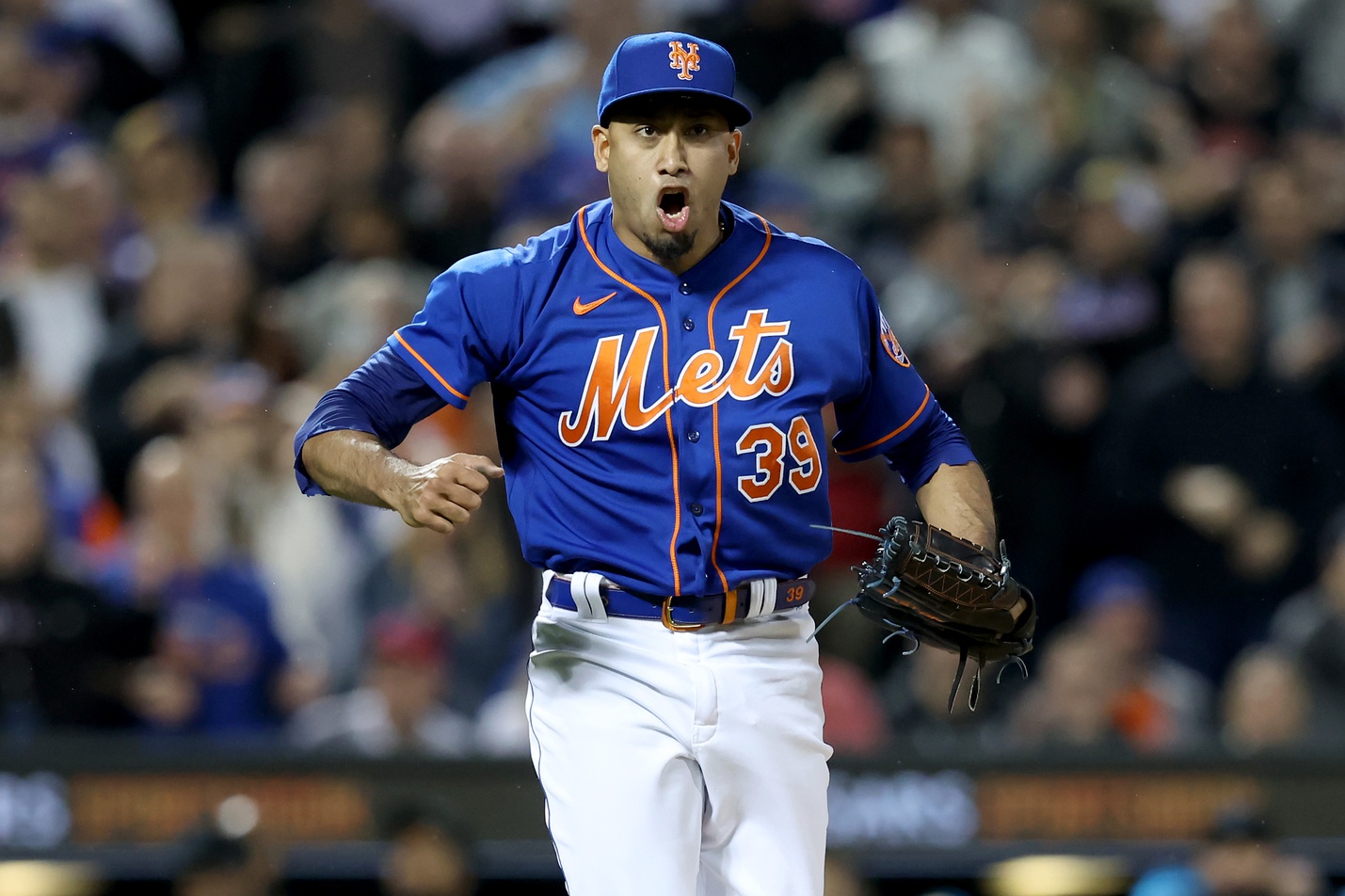
Edwin Díaz. Brad Penner-USA TODAY Sports
The Bullpen
As for the bullpen, the unit may need even more work than the rotation. Teams conventionally carry around eight relief pitchers, New York currently has four of those spots fulfilled (Díaz, Raley, Smith, and Adams) leaving several established relievers needed to complete the unit.
Some of the more prominent right-handed relievers on the market who performed well last season are David Robertson, Craig Kimbrel (3.28 xERA in 2023), Robert Stephenson (2.73 xERA in 2023), Hector Neris (3.33 xERA in 2023), Phil Maton (3.14 xERA in 2023), Jordan Hicks (3.33 xERA in 2023), Ryan Brasier (3.55 xERA in 2023), Chris Stratton (3.58 xERA in 2023), and Dylan Floro (3.35 xERA in 2023), among several others.
As of now, the only established left-handed major leaguer the Mets have is Raley. The top options on the free agent market are Aroldis Chapman and Josh Hader. Given the existence of Díaz, the spending on Hader would seem unlikely. Other left-handed options who are free agents and were strong in 2023 are Brent Suter (3.23 xERA in 2023), Will Smith (3.35 xERA in 2023), Matt Moore (3.30 xERA in 2023), and Scott Alexander (3.61 xERA in 2023).
As you can see, luckily, there are a plethora of solid relief pitchers on the market. Look for the Mets and president of baseball operations, David Stearns, to be extremely active there.
Hitting
As previously mentioned, New York’s position group is much closer to being set, on paper, than the rotation and bullpen. The likely focuses are potential supplemental options to Brett Baty at third base, left field, potential Starling Marie insurance in right field, and another designated hitting option.
New York already signed Joey Wendle, who is capable at third base, however, also is left-handed and projects more as a depth move than a potential platoon option at third base. The two top options at the corner infield spot are Matt Chapman and Jeimer Candelario. However, with New York likely hoping Baty is the future at that spot, a depth option would likely be better. Those potential options are Justin Turner, Brian Anderson, Gio Urshela, and Evan Longoria.

Teoscar Hernández. Stephen Brashear-USA TODAY Sports
Left field projects as more of an everyday opportunity for a potential external option. DJ Stewart was re-signed, but a repetition of an .840 OPS performance from last year would be a tall task, his fielding does not exactly scream everyday left fielder, and he is a prime candidate to get designated hitter at-bats. The top left fielder options on the market consist of Lourdes Gurriel Jr., Teoscar Hernández, Jorge Soler, Whit Merrifield, and Adam Duvall.
Additionally, New York was also recently mentioned as a team who is interested in KBO-import Jung Hoo Lee. Lee, who is a center fielder by trade, can slot into left field or New York can move Brandon Nimmo to left and leave Lee in center. If the Mets do choose to move Nimmo to left to fill that slot, center field options in free agency, outside of Lee, consist of the likely overpriced Cody Bellinger, former Blue Jay defensive maestro Kevin Kiermaier, and former Yankee and Cardinal Harrison Bader.
As for the other corner outfield position, Starling Marte may be the biggest question mark on the roster. After a terrific 2022 season, Marte struggled in 2023 immensely, due in large part due to injuries. There is a lot of uncertainty surrounding what he will be in 2023. For that reason, do not be surprised if New York makes a move to bring in depth there. Depth outfield options consist of Eddie Rosario, Tommy Pham, Travis Jankowski, Joey Gallo, Randal Grichuk, Hunter Renfroe, Robbie Grossman, among others.
Designated hitter is another interesting question for the Mets. They seemingly have numerous in-house options, many of which are of the younger and unproven variety (Mark Vientos, Ronny Mauricio, and Brett Baty) as well as the previously mentioned Stewart. The main designated hitter options on the market are the aforementioned Solar, Rosario, Turner, Renfroe, as well as J.D. Martinez, Carlos Santana, Andrew McCutchen, and Joc Pederson. Of course, there is Ohtani, however, as mentioned before, the Mets have seemingly turned their attention elsewhere.
Despite having a mostly solid internal stable of options, New York still has some work to do in ensuring no glaring holes in the team’s lineup.
Final Thoughts
The Mets have already been active this offseason, however, with Winter Meetings commencing expect them to be even busier given the current state of the 40-man roster. Their rotation and bullpen still require some makeover and the lineup will need a couple additions as well.
Having the richest owner in sports surely helps, and New York has the flexibility other teams certainly do not possess. However, with this being said, the team has likely learned a lesson from last year’s splurge on aging players, and currently has a new-found stable of intriguing and still developing prospects they need to be cognizant of.
New president of baseball operations David Stearns has long been praised for his craftiness and for running a perennial playoff-bound organization in Milwaukee. With more resources than he has ever had, and several positions needing filling, expect him and New York to be extremely active in the coming days and weeks.
Based on all the above, what do the Mets need to prime themselves for a return to the playoffs in 2024? Two starters, three bullpen arms, a left fielder, a designated hitter, and some position player depth. They have the adequate resources to do so, and an individual at the helm who has been very successful in years past.
Make sure to follow along with us here at Metsmerized every step of the way as our in-depth offseason coverage continues!


